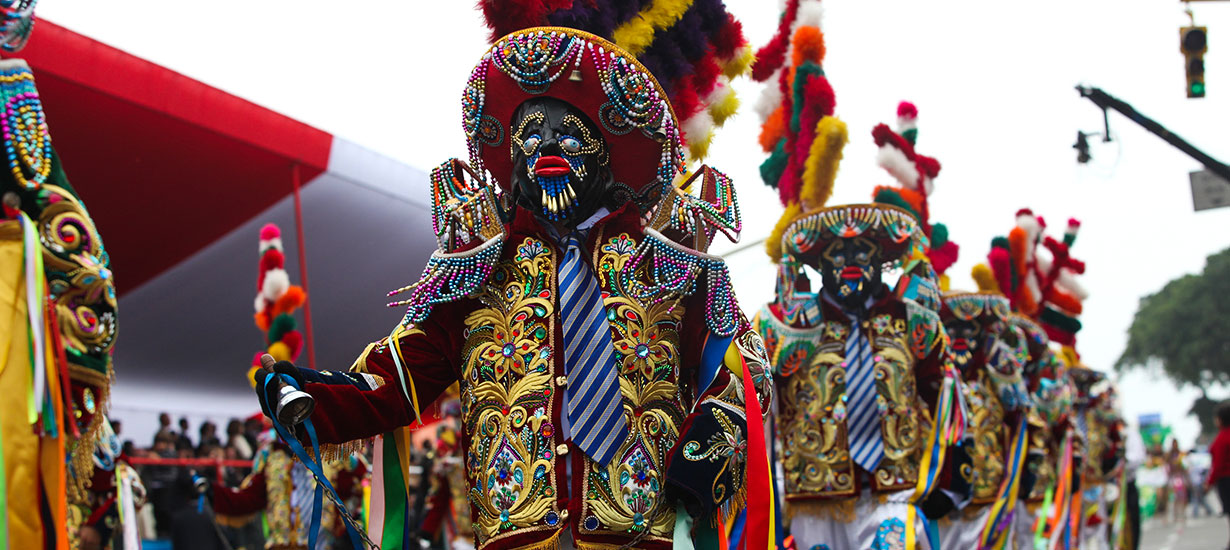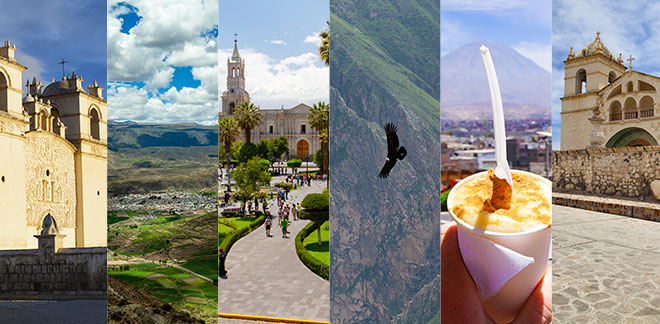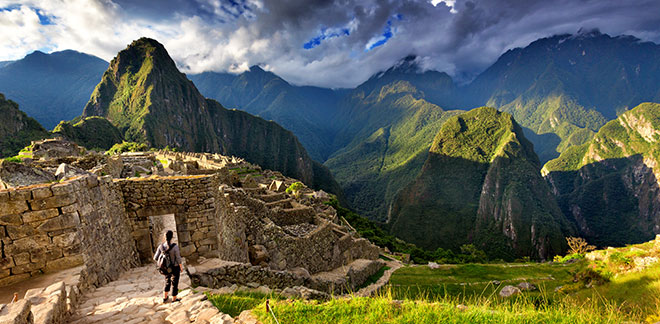Discover 5 Peruvian regions where traditional Christmas is celebrated
Síguenos en:Google News
Christmas and Peruvian traditions come together during this special time of year.
Christmas in Peru is a unique celebration, with traditions that vary across regions and blend Catholic elements with local cultures. Throughout the country, Christmas festivities evolve into genuine experiences, showcasing both ancestral customs and the cultural identity of each area.
Let’s embark on a Christmas journey where dance, music, and tradition take center stage.
Baile de las Pastoras (Shepherdesses' dance) in Yauyos
We begin in Lima, the capital, and head to the town of Quinches in Yauyos, where Christmas is celebrated in a unique way: it is a celebration for everyone.
The community celebrates the arrival of the Christ Child by dancing with traditional groups to the rhythm of a special music known as the Aylle or Baile de las pastoras, an expression declared Cultural Heritage of the Nation in 2023. Harps, flutes, violins, and maracas take center stage in this beautiful folkloric tradition, which begins on December 24 and continues until the Rooster's Mass.
Hatajo de Negritos (Group of black people) in Chincha
Continuing along the coast, in the province of Chincha, Ica region, the Afro-Peruvian community celebrates the birth of Jesus in their own distinctive way, with dances known as the Hatajo de Negritos, performed by men, and the Pallitas, performed by women.
The celebration begins on December 24 and runs until January 6, specifically during Epiphany. The dance itself consists of foot-tapping, singing, and performances featuring the Spanish violin and guitar. The Hatajo de Negritos is led by a caporal, who kicks off the festivities and is responsible for "baptizing" new participants with holy water.
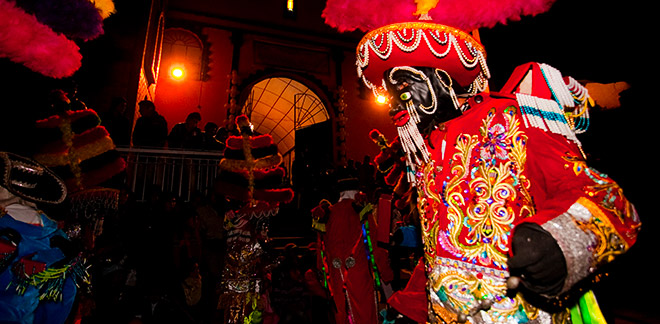 Source: Pedro Cárdenas / PROMPERÚ
Source: Pedro Cárdenas / PROMPERÚ
Fiesta de la Huaylia del Sur (The southern Huaylia festival) in Huancavelica
From Ica, we ascend a bit to arrive in Huancavelica. Declared Cultural Heritage of the Nation in 2016, the Huaylia festival features troupes that perform music and dance during the Christmas season. These troupes are led by foremen, who oversee the musicians and guide the performances.
It is worth noting that the music and dance of the Huaylia vary depending on the occasion. For instance, when the troupes stop in front of churches to honor the Child Jesus and the Virgin Mary, they perform intricate and colorful choreographies. These dances are accompanied by intense displays of physical endurance, known as "dance" and " contra dance."
Danza de Los Negritos (Black people’s dance) in Huanuco
Heading further north, we arrive in Huanuco, where the most representative folkloric dance, Los Negritos, is linked to the celebrations of Christmas and the Three Kings. It consists of three parts: the confraternity, where choreographies are performed in the main square for the public to observe; the worship, where the faithful express their devotion to the Child Jesus; and the farewell, where the dancers remove their masks and costumes, revealing their faces.
Then, Los Negritos embrace and bid farewell until the following year. For three weeks, the city of Huanuco becomes a grand stage, where the dancers showcase the beauty of their costumes and masks.
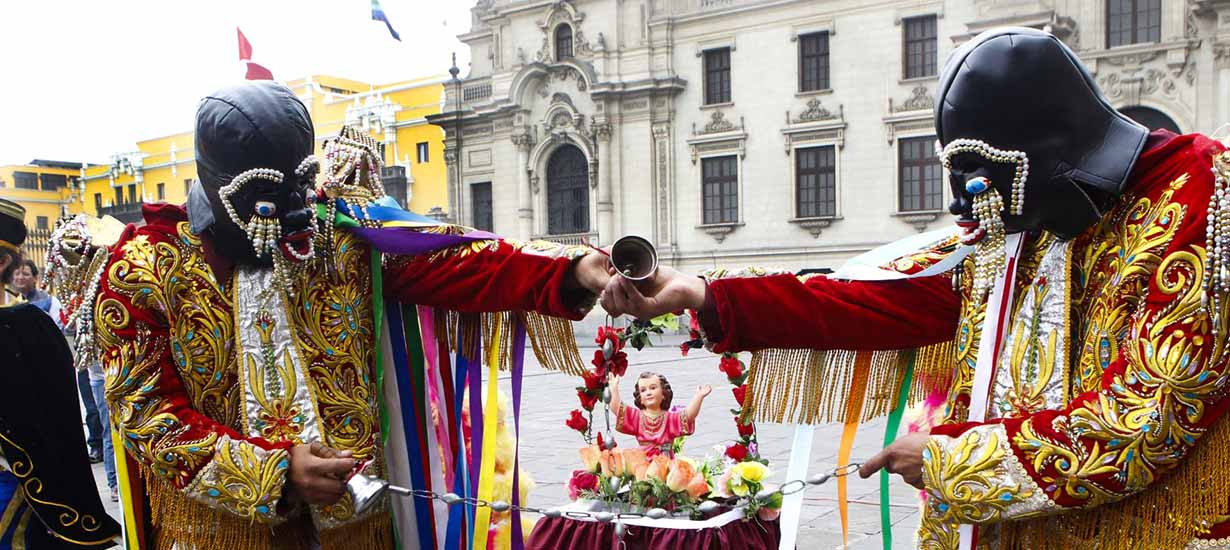 Source: Pedro Cárdenas / PROMPERÚ
Source: Pedro Cárdenas / PROMPERÚ
Las pastoreadas navideñas (Christmas shepherding) in Ucayali
East of Huanuco lies Ucayali, in the Peruvian Amazon. Here, Christmas pageants date back to the 19th century and have grown in popularity over the years. In December, children, youth, and adults parade through the streets dressed as biblical and mystical characters from the Amazon.
The main goal of this tour is to reach the nativity, embodying one of the people from that time who followed the Star of Bethlehem. Various groups represent different Christmas scenes, accompanied by traditional Amazonian dances that reflect the festive spirit of the arrival of Jesus.
All these celebrations are a testament to how the Peruvian regions have blended their local culture and traditions with Christmas festivities, offering unforgettable experiences. After all, where there is Christmas, there will always be Peruvian diversity.


